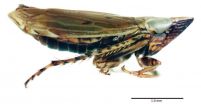(Press-News.org) Evolutionary change in a gene resurrected in the lab from the extinct woolly mammoth altered the gene's temperature sensitivity and likely was part of a suite of adaptations that allowed the mammoth to survive in harsh arctic environments, according to new research. In a study published in Cell Reports on July 2, 2015, researchers determined the whole-genome sequence of two woolly mammoths and three modern Asian elephants, predicted the function of genetic changes found only in the mammoths, and then experimentally validated the function of a woolly mammoth gene reconstructed in the lab. The research team includes scientists from Penn State University, Nanyang Technological University in Singapore, and the University of Chicago.
"This project represents a departure from previous efforts to study ancient genomes," said Webb Miller, project co-leader and professor of biology and of computer science and engineering at Penn State. "We've sequenced and analyzed a number of genomes, including several from extinct species, but before this project, we limited ourselves to purely computational analyses. However, our dissatisfaction with those types of studies increased over time as we observed a wide disparity in published predictions. We therefore refined our strategy for the current project by focusing on computational predictions that can be experimentally validated."
Project co-leader Stephan Schuster, formerly of Penn State and now at the Nanyang Technological University in Singapore, said, "I've been trying for a long time to show that ancient genomes can be sequenced as accurately as extant genomes, and the woolly mammoth seemed like an ideal species for demonstrating this capability. The Asian elephant genomes were needed for comparison in the subsequent analyses."
The two woolly mammoths sequenced by the team died about 20,000 and 60,000 years ago, respectively. To weed out errors that could result from the sequencing process or the age of the genetic material recovered from the mammoths, and to ensure the quality of the genetic data, the researchers read each letter in the mammoth's genomic alphabet an average of twenty times. They then compared the genomic sequence of the mammoths to the newly-sequenced genomes of the three Asian elephants and to the genome of the more-distantly related African elephant.
The research team found a total of approximately 33 million places where the letters, known as nucleotides, varied among the three species. Of particular interest to understanding mammoth-specific biology were 1.4 million genetic variants in which the two mammoths were identical for one variant and the Asian and African elephants shared a different, likely more-ancient variant. Of these "shared, derived" variants, the scientists identified 2,020 that resulted in a change to the amino-acid sequence of a protein encoded by a gene and 26 that caused the loss of a gene's function. They also identified one newly duplicated gene in the mammoths.
"The collection of 2,020 amino-acid variants that we discovered in mammoths, but that our analysis showed are not present in living elephants, represents a treasure trove that can be mined for the genetic causes of mammoth-specific characteristics and whose functions can be tested in further experiments," said Miller. "We used very strict conditions to keep the accuracy high, since computation is inexpensive but experiments are costly. There is no doubt that many more mammoth-specific variants are waiting to be discovered."
Of the amino-acid variants shared between the two mammoths, but not found in the living elephants, the research team found a disproportionate number of changes in genes involved in hair development, how the body stores and processes fats, and how the body senses temperature. "It is gratifying that the strongly enriched classes of genes include many of those related to the adaptation of the woolly mammoth to extreme cold," said Vincent J. Lynch of the Department of Human Genetics at the University of Chicago, the first author of the paper.
The researchers then performed laboratory experiments verifying a computational prediction that a mammoth-specific change in a protein called TRPV3, known to be related to temperature sensation, hair growth, and body-fat storage, modifies the protein's response to temperature changes.
"Identifying the genetic changes that underlie evolution of physical traits is challenging, particularly in non-model and extinct organisms," said Lynch. "Current methods make it relatively straightforward to sequence and computationally analyze genomes. However, predicting function from computational analysis alone is still incredibly difficult and unreliable. What's needed is laboratory confirmation of those predictions, which is where the challenge lies. Our paper shows how it can be done."
INFORMATION:
In addition to Miller, Schuster, and Lynch, the research team includes Oscar C. Bedoya-Reina, Aakrosh Ratan, and Daniella I. Drautz-Moses at the Penn State Center for Comparative Genomics and Bioinformatics; George H. Perry at the Penn State Departments of Anthropology and Biology; and Michael Sulak at the Department of Human Genetics at the University of Chicago.
The study was supported by the National Science Foundation (award number EAR-0921958).
CONTACTS
Webb Miller (Penn State): webb@bx.psu.edu,814-234-6289
Vincent J. Lynch (Chicago): vjlynch@uchicago.edu,773-834-1326
Barbara K. Kennedy (PIO): science@psu.edu, 814-863-4682
An international team, led by a University of Adelaide genetics expert, has made a breakthrough discovery which is expected to help thousands of young girls worldwide who are suffering from a rare yet debilitating form of epilepsy.
Professor Jozef Gecz, from the University of Adelaide's Robinson Research Institute, was a key player in identifying the responsible gene and mutations in this female-only epileptic syndrome, in 2008.
In breakthrough research published in Oxford Journals, Human Molecular Genetics, Professor Gecz has now found a treatment for this disorder. ...
(PHILADELPHIA) -- Transfer RNAs (tRNAs) are ancient molecules and indispensable components of all living cells - they are found in all three kingdoms of life i.e., in archaea, bacteria and eukaryotes. In a cell, they are part of the machinery that translates messenger RNA (mRNA) sequences into amino acid sequences.
In recent years advances in sequencing technology have enabled detailed investigations of the RNA molecules that are active in a cell. A study published July 6th in the journal Oncotarget reports on a newly discovered category of tRNA fragments as well as ...
Andrew Hicks from the Museum of Natural History at the University of Colorado and his team discovered a previously unknown leafhopper species in the New Jersey Pine Barrens, located just east of the megalopolis that extends from New York City to Washington, DC. This was the first time an insect has been reported from the state-listed threatened pinebarren smokegrass, Muhlenbergia torreyana. The study can be found in the open-access journal ZooKeys.
The discovery was made with the help of Dr. Gerry Moore of the Natural Resources Conservation Service in Greensboro, NC, ...
Young children, who possess a good understanding of their own emotions and of those of their fellow human beings early on, suffer fewer attention problems than their peers with a lower emotional understanding. Evidence of this phenomenon was found through a study of Leuphana University of Lueneburg and George Mason University, USA, under the auspices of Prof. Dr. Maria von Salisch, Professor of Developmental Psychology at Leuphana University of Lueneburg. The study was recently published in the journal Kindheit & Entwicklung (Childhood & Development).
The findings stem ...
Results of EORTC trial 62072 appearing in Cancer show that in patients with soft tissue sarcoma, whose disease had progressed during or after prior chemotherapy, pazopanib improved progression-free survival but did not change health-related quality of life. This observed improvement in progression-free survival without impairment of health-related quality of life was considered a meaningful result.
There has not been a lot of research that has looked into the quality of life of patients with advanced soft tissue sarcoma. The results of this EORTC health related quality ...
The risk of experiencing another stroke is higher if patients, after dilation of their blood vessels in the brain, receive not only clot-inhibiting drugs, but also have stents inserted. The recently published results of the VISSIT study confirm this conclusion of a rapid report by the German Institute for Quality and Efficiency in Health Care (IQWiG) of October 2014. Thus, the available studies still provide no evidence of a benefit of treatment with intracranial stents (also called "percutaneous transluminal angioplasty and stenting", PTAS). This is the conclusion of a ...
Biodegradable drinking cups or vegetable wrapping foil: the bioplastic known as polylactic acid (PLA) is already a part of our everyday lives. And yet, PLA is not yet considered a full alternative to traditional petroleum-based plastics, as it is costly to produce. Researchers from the KU Leuven Centre for Surface Chemistry and Catalysis now present a way to make the PLA production process more simple and waste-free. Their findings were published in Science.
The bioplastic PLA is derived from renewable resources, including the sugar in maize and sugarcane. Fermentation ...
A protein dubbed 'Bcl-Rambo' can protect against heart failure, suggests new research from King's College London and funded by the British Heart Foundation (BHF).
The Bcl-Rambo protein (also known as Bcl2-L-13) was named by a Japanese scientist because it was thought to be involved in activating cell death - 'Rambo' also means violence in Japanese. However, it seems that the Rambo movie character's protein counterpart has actually been misjudged. New research shows for the first time that the Bcl-Rambo protein may not be so violent after all and is actually involved in ...
Iron-nickel alloys are ubiquitous: they are found at the earth's core and in meteorites. What is fascinating about such alloys is that their inner structure can change with rapid temperature swings. Heated up above 730 °C (1,340 °F), these alloys enter what is referred to as an austenitic phase. Alternatively, they can be turned into very hard alloys, referred to as a martensitic phase, by subjecting them to extremely rapid cooling. Now a team of scientists from Germany has, for the first time, created a large-scale simulation involving 275,000 atoms representing ...
Researchers at the University of Adelaide have discovered a new method for culturing stem cells which sees the highly therapeutic cells grow faster and stronger.
The research, which was published in the prestigious international journal, Stem Cells, is expected to eventually lead to new treatments for transplant patients.
Kisha Sivanathan, a PhD student in the University of Adelaide's School of Medicine and the Renal Transplant Unit at the Royal Adelaide Hospital, says this is an exciting breakthrough in stem cell research.
"Adult mesenchymal stem cells, which ...

